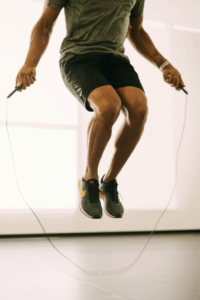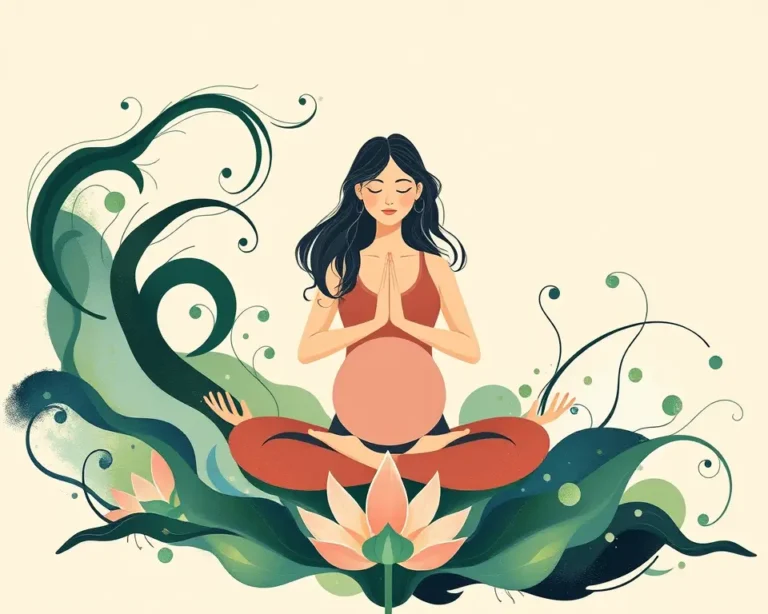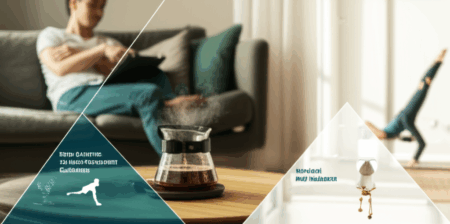Motherhood is a rewarding journey, but it can also be incredibly demanding, leading to stress and exhaustion. Yoga offers a sanctuary for mothers to reduce stress, recharge, and reconnect with their bodies. By incorporating specific yoga asanas into a fitness routine, mothers can find moments of peace and revitalization amidst the chaos of daily life.
The Importance of Yoga for Mothers
Mothers often experience burnout due to the constant demands of caring for their families. Surveys indicate that a significant percentage of women experience chronic stress related to work-life imbalance, and many new mothers face postpartum depression. Yoga’s transformative power can provide respite from these challenges.
Yoga offers numerous physical and mental health benefits for both expectant and new mothers. It’s a safe and effective way to improve flexibility and strength, reduce stress and anxiety, enhance sleep quality, and alleviate common pregnancy discomforts.
Benefits of Yoga for Mothers
- Stress Reduction: Yoga helps regulate the body’s response to stress, leading to better mood and reduced anxiety. Deep breathing and relaxation techniques calm the nervous system, promoting a sense of peace.
- Improved Physical Health: Yoga enhances flexibility, builds strength, and improves muscle tone. It can also alleviate back pain, realign the spine, and strengthen joints and muscles.
- Hormonal Balance: Pregnancy and childbirth cause significant hormonal changes. Yoga encourages relaxation and helps restore hormonal balance in the body.
- Postpartum Recovery: Postnatal yoga aids in the healing and recovery of the body and mind after giving birth. It can help rebuild core strength, reconnect abdominal muscles, and strengthen the pelvic floor.
- Emotional Well-being: Yoga has been shown to decrease symptoms of depression and increase psychological well-being and quality of life. It provides a nurturing environment for mothers to focus on relaxing and letting go of stress.
- Increased Energy: By reducing stress and improving sleep, yoga can help increase energy levels and combat fatigue.
- Bonding with Baby: Mom and baby yoga classes provide a way to ease back into exercise while connecting emotionally and physically with the baby.
Yoga Asanas for Stress Reduction and Recharging
Here are some of the best yoga asanas for mothers to reduce stress, recharge, and improve their overall well-being:
1. Child’s Pose (Balasana)
The Child’s Pose is a restorative asana that promotes relaxation and calmness by reducing tension in the body and calming the mind. It stretches the hips, thighs, and ankles while gently lengthening the spine.
How to do it:
- Kneel on the floor with your knees hip-width apart and your toes touching behind you.
- Take a deep inhale, and as you exhale, lower your hips back towards your heels, stretching your arms out in front of you.
- Rest your forehead on the mat and relax your neck and shoulders.
- Keep your arms extended, or bring them back by your sides with your palms facing up.
- Take slow, deep breaths, feeling your spine lengthen and your body relax with each exhale.
- Stay in this pose for several breaths or as long as feels comfortable.
2. Cat-Cow Stretch (Bitilasana Marjaryasana)
The Cat-Cow Stretch is a gentle pose that helps relieve back pain and improves spinal flexibility. It’s a great way to release stress and tension in the body.
How to do it:
- Start on your hands and knees, with your wrists directly under your shoulders and your knees directly under your hips.
- Inhale as you drop your belly towards the floor, arching your back and lifting your head and tailbone towards the ceiling (Cow Pose).
- Exhale as you round your spine towards the ceiling, tucking your chin to your chest and drawing your tailbone down (Cat Pose).
- Continue alternating between Cat and Cow pose for 5-10 breaths, coordinating your movement with your breath.
3. Downward-Facing Dog (Adho Mukha Svanasana)
Downward-Facing Dog is a common yoga posture that stretches the entire body and improves circulation. It can help relieve stress, fatigue, and mild depression.
How to do it:
- Start on all fours with your hands shoulder-width apart and your knees hip-width apart.
- Tuck your toes under and lift your hips up and back, forming an inverted V-shape with your body.
- Press your hands firmly into the ground and lengthen your spine, drawing your shoulder blades down your back.
- Keep a slight bend in your knees if your hamstrings are tight.
- Hold the pose for several breaths, breathing deeply and evenly.
4. Corpse Pose (Savasana)
Corpse Pose is a restorative asana typically practiced at the end of a yoga session to calm the mind, cool the body down, and release any tension. It lowers blood pressure and promotes relaxation and sleep.
How to do it:
- Lie flat on your back on a yoga mat or comfortable surface.
- Make sure your legs are comfortably apart and your arms are by your sides, with your palms facing up.
- Close your eyes and take a deep breath in, feeling your belly expand.
- Exhale slowly and feel your body sink deeper into the mat.
- Focus on relaxing each part of your body, starting with your toes and working your way up to your head.
- Stay in this pose for at least 5-10 minutes, allowing yourself to completely relax and let go.
5. Bridge Pose (Setu Bandhasana)
Bridge Pose targets the glutes and pelvic floor muscles while supporting spinal health and boosting circulation. It’s a restorative posture that can help strengthen the back and pelvic floor.
How to do it:
- Lie on your back with your knees bent and feet flat on the floor, hip-width apart.
- Keep your arms straight at your sides, palms down.
- Inhale, and as you exhale, lift your hips off the floor, engaging your glutes and core.
- Gently tilt your pelvis upward, using your abdominal muscles.
- Hold the pose for a few breaths, then slowly lower back down to the starting position.
6. Legs-Up-the-Wall Pose (Viparita Karani)
Legs-Up-the-Wall Pose is a restorative asana that improves circulation and reduces swelling in the legs. It can also help calm the mind and relieve stress.
How to do it:
- Sit with one hip close to a wall.
- Gently swing your legs up onto the wall as you lie back on the floor.
- Position your body so that your sit bones are as close to the wall as is comfortable.
- Rest your arms by your sides with your palms facing up.
- Close your eyes and breathe deeply, relaxing your body.
- Stay in this pose for 5-15 minutes.
7. Warrior II (Virabhadrasana II)
Warrior II strengthens legs and improves balance. It also opens the hips and chest, promoting feelings of empowerment and stability.
How to do it:
- Stand with your feet wide apart, about 4 feet.
- Turn your right foot out 90 degrees and your left foot in slightly.
- Bend your right knee over your right ankle, keeping your thigh parallel to the floor.
- Extend your arms parallel to the floor, reaching actively through your fingertips.
- Keep your shoulders down and your gaze focused over your right hand.
- Hold the pose for several breaths, then repeat on the other side.
8. Modified Plank
Modified Plank is an excellent way to rebuild core strength after childbirth without straining the body.
How to do it:
- Start in a push-up position but keep your knees on the floor.
- Engage your core and keep your back straight, forming a straight line from your head to your knees.
- Hold the pose for as long as you can maintain good form, gradually increasing the duration as you get stronger.
9. Cobra Pose (Bhujangasana)
Cobra Pose strengthens the back and opens the chest, relieving tension in the neck and shoulders.
How to do it:
- Lie face down on the floor with your hands under your shoulders.
- Gently lift your chest off the floor, keeping your lower ribs on the ground.
- Keep your shoulders down and your gaze forward.
- Hold the pose for a few breaths, then slowly lower back down.
10. Pelvic Tilts
Pelvic Tilts help re-engage your core and improve posture. They are gentle and effective in rebuilding strength after pregnancy.
How to do it:
- Lie on your back with your knees bent and feet flat on the floor.
- Gently tilt your pelvis upward, engaging your core muscles.
- Press your lower back into the floor.
- Hold for a few seconds, then release.
- Repeat several times.
Additional Tips for Mothers Practicing Yoga
- Consult with a healthcare provider: Before starting any exercise routine after childbirth, it’s important to get approval from a doctor.
- Start slowly and listen to your body: Avoid overexertion and modify poses as needed to accommodate your body’s changing needs.
- Create a calming environment: Practice yoga in a cool, well-ventilated space.
- Stay hydrated: Drink plenty of water before, during, and after your yoga practice.
- Be patient: It takes time to rebuild strength and flexibility after pregnancy. Be kind to yourself and celebrate your progress.
- Incorporate breathing exercises: Deep, conscious breathing can enhance relaxation and calm the nervous system.
- Consider joining a class: Look for prenatal or postnatal yoga classes in your area. These classes offer a supportive environment and guidance from experienced instructors.
By incorporating these yoga asanas into your routine, you can reduce stress, recharge your body and mind, and embrace the journey of motherhood with greater ease and joy. Remember to listen to your body, be patient with yourself, and enjoy the process of reconnecting with your inner strength and peace.







